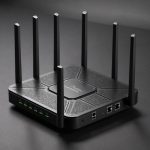Understanding Smart Home Integration
Smart home integration is an essential aspect of modern home automation, offering convenience and efficiency by connecting various devices under one system. Using smartphones as central control devices simplifies this process, allowing users to manage multiple functions from the palm of their hand. This integration transforms how devices communicate and work together, making everyday tasks more streamlined.
The importance of smartphones in this ecosystem cannot be overstated. They act as a universal remote, providing access to different devices and enabling features like scheduling, monitoring, and remote access. This centralised control not only enhances comfort but also empowers users to take full advantage of their smart home setup.
This might interest you : Elevate Your Home’s Energy Savings: Control Smart Window Shades with Your Smartphone!
When considering smart home integration, compatibility is a crucial factor. Devices and platforms must seamlessly work together to avoid functionality issues. It’s vital to research and ensure your chosen devices support the smartphone control applications you intend to use. Compatibility impacts the overall efficiency and reliability of your smart home system, making it an essential consideration for a successful integration.
Essential Apps for Smart Home Management
The right smart home apps can significantly ease managing your connected devices. These control applications are indispensable tools on your mobile platforms, enabling seamless integration and operation of your smart home.
This might interest you : Transform Your Pet Care Routine: The Comprehensive Smart Home Manual with Smartphone Connectivity
Top Recommended Apps
Smart home apps like Google Home, Apple HomeKit, and Samsung SmartThings excel in enhancing user experience. They offer intuitive interfaces and compatibility with a wide range of devices, streamlining your control. Features to look for include user-friendly design, integration support, and robust security measures to protect your data.
App Features to Consider
When selecting an app, ensure it can manage your specific devices, offers customisation options, and provides strong support for voice commands. Apps that incorporate automation and AI-driven scheduling can further enhance convenience. Reliability and regular updates are crucial to prevent glitches and ensure ongoing compatibility.
Case Studies in Successful App Usage
Consider households that leverage these apps for tasks like setting thermostats, automating lighting, or monitoring security cameras. Families have reported improved energy efficiency and heightened security, demonstrating the potential of these mobile platforms to revolutionise home management. These real-world applications underscore the importance of a capable smart home app.
Choosing Compatible Smart Devices
Selecting the right smart devices is crucial for seamless smart home integration. By ensuring smart device compatibility, users can effectively utilise smart technology and enhance their overall home automation experience. Start by identifying devices that are compatible with your existing home automation devices. This compatibility ensures your devices will communicate without any issues, enhancing your smartphone control over your smart home.
Popular devices include smart lights, thermostats, and security cameras, all of which provide enhanced functionality and convenience. It’s vital to check each product’s specifications to confirm they support your smartphone’s operating system and app ecosystem, ensuring smooth integration into your setup.
Experts recommend researching the brands and models that are known for providing reliable connectivity and robust user support. Consider devices that integrate with popular platforms like Google Assistant, Alexa, or Apple HomeKit, as these typically offer broad compatibility with other smart technology.
Additionally, evaluate user reviews and expert opinions to guide your decision-making. This preparation will help build a compatible smart ecosystem, allowing for more efficient management of your smart devices through your smartphone.
Step-by-Step Guide to Setting Up Smartphone Control
Setting up smartphone control for your smart home is a straightforward process that enhances your home automation experience.
Initial Configuration Steps
Begin by downloading the related smart home apps on your smartphone. Ensure you’ve created an account and have verified your email if required. Familiarise yourself with the app, exploring basic settings and available features. Some apps might guide you with a tutorial, making it easier to understand functionalities.
How to Connect Devices to Your Smartphone
To connect devices, use the app’s “Add Device” feature. Ensure each device is powered on and within your Wi-Fi network range. Follow on-screen instructions, which typically involve scanning for devices or entering a pairing code. Once connected, you should rename the devices for easy identification, particularly when managing multiple gadgets.
Troubleshooting Common Setup Issues
Common setup issues can include connectivity problems or app permission errors. Make certain your Wi-Fi network is stable and that your smartphone has granted necessary app permissions. If devices fail to connect, restart both the device and the app. Checking the manufacturer’s support pages or FAQs can provide additional help for unresolved issues.
Advanced Control Techniques
Smart home automation offers exciting possibilities through advanced control methods, significantly enhancing your smart home’s efficiency. Harnessing the power of advanced smartphone control can transform how you interact with your devices daily.
Utilising Voice Assistants
Voice assistants like Alexa and Google Assistant are fundamental to achieving enhanced functionality. They allow for hands-free operation, enabling tasks through simple voice commands. This feature is particularly advantageous for rapid efficiency techniques, such as adjusting lighting or playing music without physically accessing a device.
Automating Routines
Automation is a cornerstone of smart homes. By setting up specific routines, you can simplify daily management tasks. For example, program your lights to dim and your thermostat to adjust as part of a bedtime routine, seamlessly transitioning your home environment.
Scenario-Based Use Cases
Consider situations where advanced control significantly benefits. For instance, automate your coffee maker to start brewing when your morning alarm goes off. Such scenarios illustrate how smart home automation improves daily operations, offering both convenience and increased personalisation.
These advanced techniques not only streamline processes but also enhance your smart home’s overall functionality, making everyday tasks more intuitive and integrated.
Maintaining Your Smart Home Ecosystem
Maintaining a smart home ecosystem entails regular updates and troubleshooting to ensure optimal performance. Begin by prioritising firmware and software updates for your devices. These updates not only introduce new features but also address security vulnerabilities. Typically, manufacturers release updates periodically, so enabling automatic updates can simplify this process.
Troubleshooting common smartphone control issues often involves checking connectivity and device settings. If a device fails to respond, ensure it’s connected to the right network and that all permissions are correctly set on your smartphone. Restarting both the app and device can resolve many issues. Consulting manufacturer’s support can provide additional guidance if problems persist.
To secure your smart home, it is crucial to protect your networks and devices. Use strong, unique passwords and enable two-factor authentication where possible. Regularly review access permissions for your devices and apps. Keeping both your home network and all devices secured ensures that your smart home operates efficiently and safely. These strategies help maintain a robust smart home environment, fostering reliability and security in daily operations.
User Testimonials and Success Stories
Collecting user experiences offers valuable insight into effective smart home success. Many users report that smartphone control significantly enhances their ability to manage daily tasks, providing real-life examples of how smart technology simplifies life.
For instance, Alice, a working professional, found efficiency in using smart home devices to automate her morning routine. She shared how a single tap on her smartphone triggers a series of tasks—lights turning on, the thermostat adjusting, and the coffee machine starting—which prepares her house as she wakes up.
Another user, Tom, highlighted the added security his smart home setup provides. With mobile platforms, he can monitor security cameras and receive alerts directly on his phone, giving him peace of mind while away from home.
Experts in the field also note that integrating smart technology can tackle unforeseen challenges. By optimising energy use and offering remote management capabilities, these systems demonstrate how user experiences are transformed for the better.











